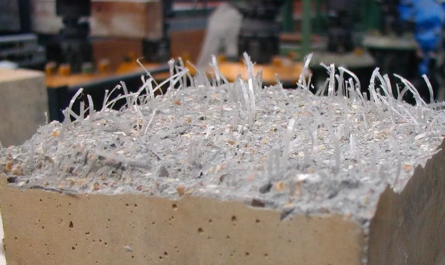Potash Fertilizers: Essential Nutrient For Crop Growth
Introduction to Potash
Potash refers to various mined and manufactured salts that contain potassium in water-soluble form. Potassium is one of the three primary plant nutrients, along with nitrogen and phosphorus. Potash is found in different mineral forms around the world including langbeinite, sylvite, and carnalite. Potash fertilizers are manufactured from these various ore sources and are applied to soils to supply potassium, which is absorbed by plants for essential growth, yield and quality functions.
Benefits of Potassium for Crops
Potassium plays a key role in many important plant processes and brings numerous benefits for crop growth and productivity. It helps in water regulation inside the plant and improves drought resistance. Potassium activates many enzymes for plant metabolic functions and carbohydrate transportation. It regulates the opening and closing of plant stomata and improves water use efficiency. Proper potassium nutrition also increases pest and disease resistance in plants. Adequate potassium levels result in stronger stems and stalks, improving lodging resistance in cereals. It boosts the size, quality and yield of fruits, vegetables and cash crops. Potassium application has shown yield increases in many field crops including corn, wheat and soybeans.
Uses of Potash Fertilizers
Due to the important role of potash fertilizer forms are widely used globally to boost crop potassium levels. Muriate of potash (KCl) is the most common and lowest-cost potash fertilizer. It contains around 60% potassium oxide (K2O) and is highly soluble and efficient. Sulfate of potash (K2SO4) contains around 50% potassium with lesser chlorine content compared to muriate. It is more expensive but preferred for chloride-sensitive crops. Nitrogen-potassium (NPK) mixtures combine potash with nitrogen and phosphorus to supply multiple nutrients through a single application. These soluble granular NPK fertilizers provide balanced crop nutrition for optimum growth. Potash is also supplied through specialty fertilizers for certain soil and crop conditions.
Global Potash Industry
The global potash industry primarily comprises potash mining and production facilities located around major potash deposits. Canada holds the largest potassium reserves and is the leading producer and exporter, accounting for over 40% of world output. Other top producing countries are Russia, Belarus and Germany. Israel also has sizable potash resources. Global annual potash fertilizer production stands at around 67 million tonnes. Consumption is increasing steadily year-on-year to fulfill growing worldwide agricultural needs, especially in Asia and South America. Canada, Russia and Belarus dominate international potash trade with large potash export volumes. Potash prices are determined by production level, supply contracts between nations and global demand-supply dynamics. With rising food demand projected, the potash industry has significant growth potential in the coming decades.
Potash Use in Different Regions
The nature and volume of potash fertilizer applications vary depending on the region and predominant cropping patterns. In North America, large corn production areas like the U.S. Midwest rely heavily on potash to boost corn yields. Wheat-growing regions of Canada, U.S. and Europe also use high amounts based on soil tests. Rice and sugarcane in tropical areas require maintenance of adequate potassium levels. In Asia, intensive vegetable and cash crop farming in China, India and Southeast Asia have increased regional potash needs. Brazil, a major soybean producer, applies large quantities in its cerrado soils. Africa’s row crops and export commodities increasingly utilize potash to improve soil fertility and long-term sustainability under improved fertilizer use. Proper nutrient management and balanced potash applications supply potassium efficiently across diverse global farming conditions.
Potash in India
Being an agriculturally important country, India also substantially contributes to the rising global demand for potash fertilizers. Around 5 million tonnes of potash is consumed annually for a variety of field, horticulture and plantation crops. Rice, wheat, sugarcane, potato and cotton are major potassium depleting crops in India. Deficiency of potash is widespread in acid and alkali soils which comprise over 30% of the total cultivated area. Hence, regular soil testing for potassium and need-based fertilizer recommendations are essential especially for high-yielding varieties. Promoting balanced NPK application addressing micronutrient deficiencies can boost crop productivity manifolds. Recent domestic policy measures also aim to increase fertilizer availability and use efficiency across diverse farming systems. The future holds promising opportunities for stable potash imports, industry partnerships and optimal utilization for enhancing farm prosperity in India.
Conclusion
In conclusion, potash is a vital plant nutrient supplied through various natural and manufactured fertilizer forms globally. Potassium plays multifaceted roles in crop metabolism, yield and quality. The potash fertilizer industry centered on major mineral deposits works to fulfill rising agricultural demands sustainably. Its applications support optimum nutrient management across different regions and farming practices. Ensuring adequate and balanced potassium supply tailored to soil-climate conditions through soil testing and advisory services remains important for maximizing productivity and crop quality. The essential role of potash in maintaining crop yields, soil health and farmer livelihoods underscores its significance for stable food production worldwide in the future.
*Note:
- Source: Coherent Market Insights, Public sources, Desk research
- We have leveraged AI tools to mine information and compile it




